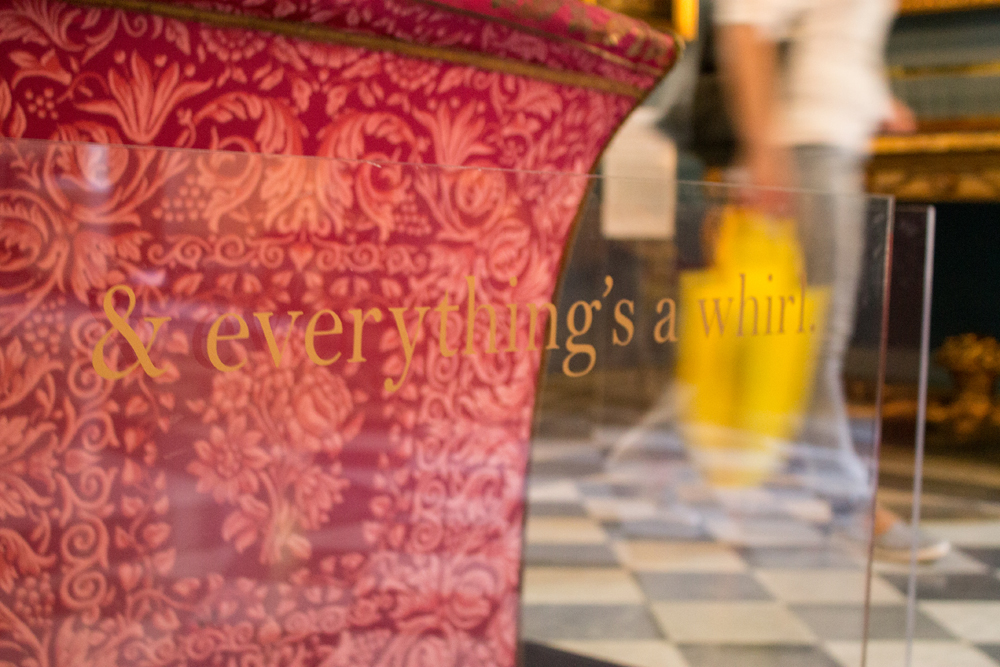The Napoleonic Museum in Rome twists and turns through opulent rooms. The museum is dedicated to the Bonaparte family, who are associated with French history, but also made history in the city of Rome in the 18th and 19th centuries. The decorative richness of the space—in the gold threads of the fabrics upholstering the armchairs and sofas—and the history captured in the paintings that flank the walls, echo the magnificence that once filled these rooms, where history was made and sophisticated conversations were held.
Room after room, visitors can retrace the fate of the First and Second Empire, the Roman Republic and the Kingdom of Naples by looking at the portraits of the historic players and the objects that characterized their private and public lives. Today, an addition to the usual silence is a soft buzz and the sound of rain, a constant and continuous background noise that accompanies the visitor in one of the museum’s rooms, urging them to discover something new. These sounds have a strangely alienating, but not disturbing, effect, pushing the now-curious viewer to look at the walls and surfaces in search of their source. Historic and contemporary art come together, creating a dialogue between the past and present.
The sound is part of “Bees,” a solo exhibition by Canadian artist, writer and musician Josh Thorpe. Curated by critic and curator Luca Arnaudo, the exhibition inserts a selection of newly commissioned digital, graphic and conceptual works into three of the museum’s rooms, aiming to distort the visitor’s senses. In the first room, Thorpe has printed phrases on various surfaces—on windows, mirrors, vitrines—which also reference bees. Thorpe uses bees as a starting point to urge visitors to search in the hidden depths, to pay more attention. The bees make us realize that our surroundings are not always revealed in a clear and immediate manner. In this way, particularly within the second room, Thorpe, using the sound of the rain and the buzz of those little insects, merges the orderly world of bees and nature within the Napoleonic Museum.
The buzz becomes something that cannot be ignored, and the phrases printed on the mirrors, on the windows and on the panels of plexiglass (placed to protect the items on display), have the same importance. Within these interventions, Thorpe leaves clues and messages for the humans, emphasizing the importance of the natural world and small insects. This importance is furthered in the third room, where black-and-white and coloured screenprints with trees and flowers are scattered around.
A symbol used by emperors, popes and kings (and particularly loved by Napoleon Bonaparte, who asked for pattern of embroidered bees on the imperial dress for his coronation ceremony), bees become the representation of something more—a constant, yet never wholly visible element, evoked by text, sound and images. There’s an emotional tension at work here: visitors may attempt to figure out the source of the sound, but it is never explicitly revealed.
Throughout the whole exhibition there is something poetic that transmutes paintings, words and sound recordings into a rhythmic composition with soft tones, which turns the visit into a pleasant and unique experience. “Bees” is an excellent opportunity to get to know a hidden part of Rome and, at the same time, encounter a bit of Canada.

 Josh Thorpe, "Bees" (installation view at the Napoleonic Museum), 2015.
Josh Thorpe, "Bees" (installation view at the Napoleonic Museum), 2015.







